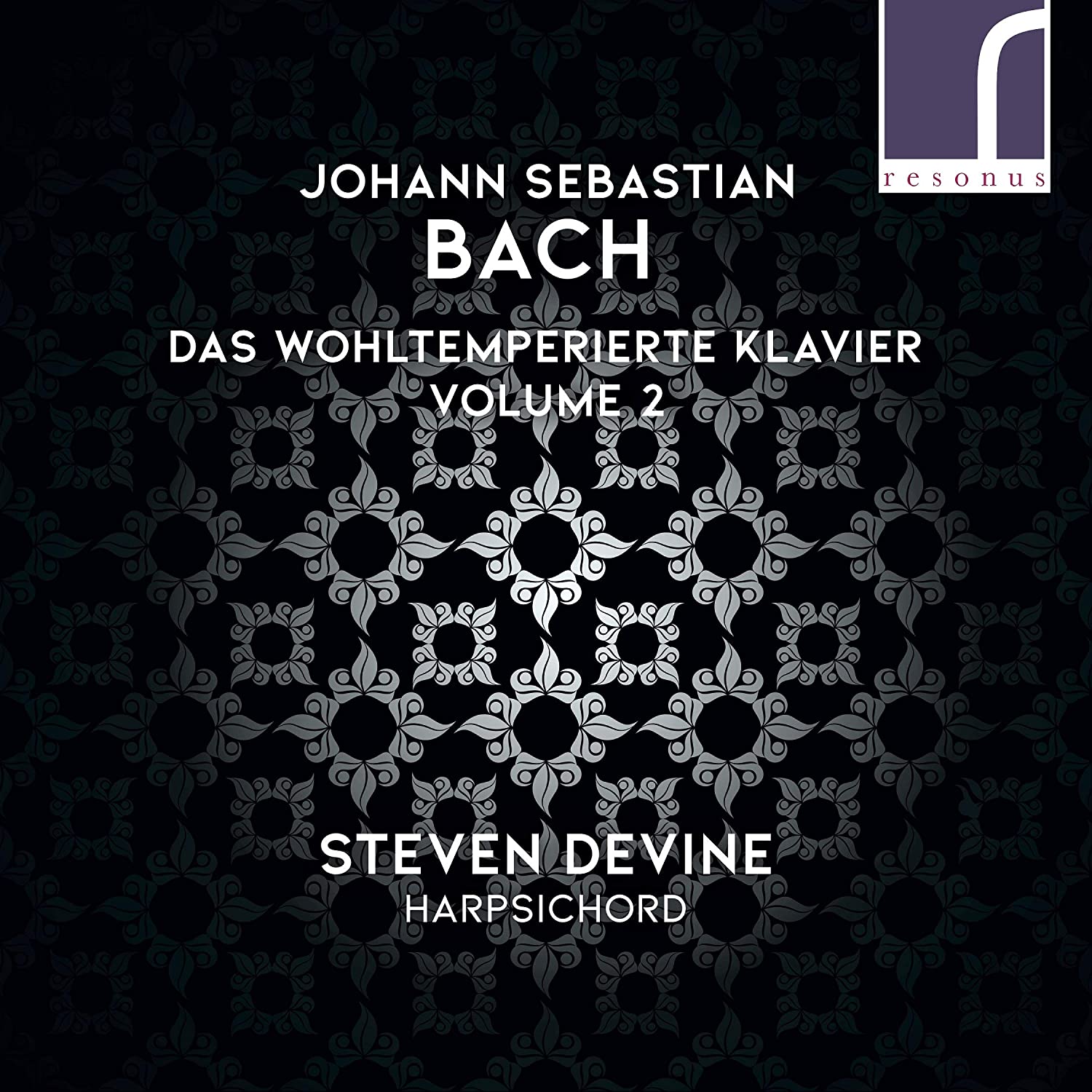Steven Devine harpsichord
148:45 (2 CDs in a single jewel case)
resonus RES10261
Click HERE to buy this on amazon.co.uk
As in Volume 1 that I reviewed for the EMR in July 2019, Steven Devine records Volume 2 of Das Wohltemperierte Klavier on Colin Booth’s 2000 harpsichord after a Johann Christoff Fleischer original (Hamburg 1710) that he tunes in a version of Kirkberger III, ‘gently modified so as to retain the key colours that make the harpsichord sing so much better, but eliminating any extreme dissonances’.
I have been waiting impatiently for Volume 2 to appear, as Das Wohltemperierte Klavier is for me a perfect accompaniment to the periods of lock-down we have experienced. Playing one of these highly individual and characterful pieces each day is a way of articulating the passage of time in a way that helps give shape and direction to life when other bearings fail. I said in reviewing the first volume that Devine’s ‘has a particular seemingly effortless grace, and it’s the one of all I’ve heard in the past ten years that I am happiest to live with.’ Volume 2 confirms this judgement, and the ‘effortless grace‘ – which of course is the result of much hard work and study, and is the very opposite to those recordings which make you sit up and take notice of the player’s ability (rather than the composer’s) – is just what I hope readers will want of a recording that they are going to live with. Clever and ‘original’ performances are fine in a concert hall where they can make us sit up and rethink our opinions. But that kind of attention-seeking playing time after time is wearisome. We need to remember that although Bach was a consummate composer, he was revered in his lifetime as a keyboard player, and with that went a lifetime’s experience as a teacher setting goals that would stretch his pupils’ capabilities as well as their imaginations. Stellar performances like this one come I suspect from those who are born teachers too: Devine’s pupils are hugely lucky.
Colin Booth’s harpsichord is never aggressive and I am hardly aware of the chosen registration, as it all seems so naturally right. Without knowing the original on which it is based, all I can say is that this instrument combines clarity with a degree of mellowness that makes the lines sing and gives a distinct aura, like the sympathetic strings of a Viola d’Amore. Prelude 18 in G# minor (CD 2, track 11) illustrates the registrational possibilities well – they are gentle and unobtrusive and don’t clamour for attention – and the listener looking to understand Devine’s subtle approach to rhythmic articulation should listen to the swinging inégales of the Prelude in D (CD 1, track 9) or to the Fugue in D minor (CD 1, track 12). His ornaments and passagework are equally unmechanical and have that degree of fluidity that shows how well he is in command of the music.
The distinctive tuning that results from Devine’s tweaking of Kirkberger III never makes me wince, but results in the sharp keys maintaining a pronounced distinction from the flat keys and while we shall never know with absolute certainty just how Johann Sebastian tuned his keyboards, this version certainly produces a distinctive sound in each key, one of the chief lacks in performances on pianos tuned in modern equal temperament. This time, Devine’s essay ponders the range of possibilities behind this second collection and its context, reflecting some of the more modern or Galant-leaning characteristics that herald the later classical Sonata form.
In spite of being recorded quite closely, the acoustics of St Mary’s Church, Birdsall in North Yorkshire create a wonderful aura of tonality for each piece – just listen to the harmonics hanging in the air between the end of the Prelude and the beginning of the Fugue in G (CD2, tracks 5-6). This is – and remains with the publication of Part 2 – my top choice for the 48.
David Stancliffe
